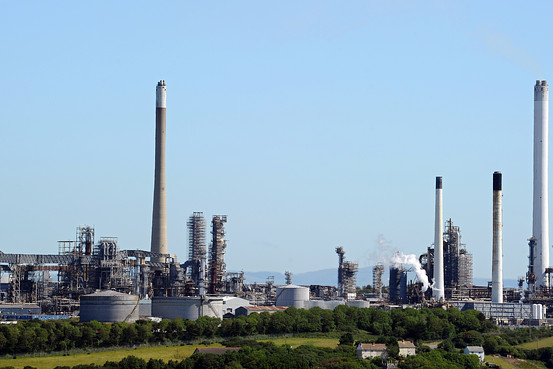Following the explosion at Pembroke Refinery (discussed in part one), it was found that the contents of the tank had flashpoints close or below the operating temperature of 40°C. The hydrocarbon layer had a flashpoint of 54°C, the liquid sampled from the main drain line had a flashpoint of 15°C, amine sump of 4°C and the flashpoint of the material last known to be in the tank had a flashpoint between -1 and -3°C. The operating temperature being above the flashpoints of the materials coupled with the light hydrocarbon contamination resulted in an accumulation of potentially flammable vapours in the head of the 17T302 tank, creating a flammable atmosphere.
Flammable atmospheres can exist in the workplace continuously or only for short periods of time. By law, said areas must be classified into zones depending on their location, size, likelihood of an explosion occurring and its persistence. The areas classified should adhere to international standard IS EN 60079-10-1: 2020 Classification of areas – Explosive Gas Atmospheres. The standard should be used when conducting a Hazardous Area Classification assessment hence, the zones comply with ‘Dangerous Substances and Explosive Atmospheres Regulations 2002’ (DSEAR) and the ATEX Directives. Schedule 2 of the regulations defines how those zones should be classified:
- Zone 0 is a place in which an explosive atmosphere is present ‘constantly’ for long periods or frequently; More than 1000 hours annually.
- Zone 1 is a place in which an explosive atmosphere is ‘likely’ to occur in normal operation occasionally; 10-1000 hours annually.
- Zone 2 is a place in which an explosive atmosphere is ‘not likely’ to occur in normal operation but, if it does occur, will persist for a short period only; Less than 10 hours annually.
- Non-hazardous is a place where an explosive atmosphere is not expected to occur in any foreseeable circumstances, and no special protective measures are required for equipment used in this place.
When the plant was opened in 1964 the ARU tanks were initially assigned a HAC of Zone 1 and downgraded to Zone 2. In 2008, the HAC was reviewed, and the tanks were deemed as ‘Non-Hazardous’. As there was an accumulation of potentially flammable vapours from the hydrocarbon layer in the headspace of the tank, the inside of the tank should have been assigned a Zone 0. Additionally, the exterior and the tank vents should have also been zoned areas.
According to the specified guidelines in the regulations, the area within the tank and drainage sump and the area around the tank vent should have been rated a Zone 1, while the areas around the tank shell should have been classified as Zone 1 and 2.
It was later discovered that the staff responsible for this downgrade was unaware of the change in operation of the unit becoming a closed system and the resulting hydrocarbon hazards present, hence the risk of a flammable atmosphere was disregarded. The HAC team did not provide any such as side elevation drawings other than a plan view of the area. This resulted in an incorrect HAC and no precautionary measures were taken to improve the safety around the area. Due to this downgrade, the risks of a flammable atmosphere were not considered when the cleaning process was being determined.
Furthermore, it was found that there were several items of electrical equipment present in close proximity to the tanks. It was also found that said equipment was not suitable or safe for use in a flammable atmosphere.
This highlights the importance of properly classifying hazardous areas. If the staff and contractors were aware of the risks associated with flammable atmospheres more control measures would have been put in place. It also showcases the importance of relaying all relevant information when implementing safety procedures. If the light hydrocarbon contamination had been disclosed to the HAC team, the risks were more likely to be considered.
Occupli Consultancy specialists provide practical solutions and advice to all our clients in all areas of ATEX and process related safety concerns. Our team work to legislative requirements and benchmark against industry best practice to produces assessments for our clients. Occupli Consultants have carried out ammonia risk assessments in a range of different industries including medical devices, pharmaceutical and food industries.
If you require consultation on process or ATEX safety issue, reach out to our team of consultants at the following here.

